How to set the parameters of CNC milling parts?
The fundamental parameters to consider in the milling process are the following:
Choice of the type of machine, accessories and systems for fixing the most part and tool.
Choice of the type of milling: frontal, Axial in agreement or Axial n’oposition.
Choice of cutting parameters: cutting speed (Vc), tool xiru speed (n), cutting speed (Va), pass depth (p), cutting width (Ac), ಇತ್ಯಾದಿ)
There is no unanimity within the machining sector regarding the names of milling procedures. Axial milling is also called peripheral milling, cylindrical milling, or helical milling. The two types of Axial milling are also known by the names:
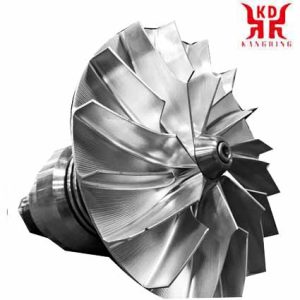
Set the Parameters of CNC Milling Parts
Milling to match: milling is counter-low, or down-current milling.
ಮಿಲ್ಲಿಂಗ್ ವಿರೋಧ: ಮಿಲ್ಲಿಂಗ್ ಅಂಚಿಗೆ ವಿರುದ್ಧವಾಗಿದೆ, ಅಥವಾ ಸಾಮಾನ್ಯ ಮಿಲ್ಲಿಂಗ್.
ಅನುಗುಣವಾಗಿ ಮಿಲ್ಲಿಂಗ್ನಲ್ಲಿ, ತುಣುಕು ಪ್ರಗತಿಯಲ್ಲಿ ಅದೇ ಭಾವನೆಯಲ್ಲಿ ಉಪಕರಣ xira. ಈ ರೀತಿಯ ಮಿಲ್ಲಿಂಗ್ ಅನ್ನು ಕಾಂಟ್ರಾ-ಲೋ ಮಿಲ್ಲಿಂಗ್ ಎಂದೂ ಕರೆಯಲಾಗುತ್ತದೆ ಏಕೆಂದರೆ, ಗಿರಣಿಯ xiru ಸಮತಲವಾಗಿರುವಾಗ, ಕತ್ತರಿಸುವ ಬಲದ ಲಂಬ ಘಟಕವನ್ನು ಪ್ಯಾಕ್ ವಿರುದ್ಧ ನಿರ್ದೇಶಿಸಲಾಗುತ್ತದೆ. ಮಿಲ್ಲಿಂಗ್ ವಿರೋಧದಲ್ಲಿ, ಅಂಚಿಗೆ ವಿರುದ್ಧವಾಗಿ ಮಿಲ್ಲಿಂಗ್ ಎಂದೂ ಕರೆಯುತ್ತಾರೆ, ವಿರುದ್ಧವಾಗಿ ಸಂಭವಿಸುತ್ತದೆ, ಇದು, ಉಪಕರಣವು ಅತ್ಯುತ್ತಮವಾದ ಭಾಗಕ್ಕೆ ವಿರುದ್ಧ ದಿಕ್ಕಿನಲ್ಲಿ ಹೋಗುತ್ತದೆ ಮತ್ತು ಕತ್ತರಿಸುವ ಬಲದ ಲಂಬವಾದ ಘಟಕವು ಅಂಚಿನ ವಿರುದ್ಧ ನಿರ್ದೇಶಿಸಲ್ಪಡುತ್ತದೆ.
ಯಂತ್ರದ ಮೇಲ್ಮೈಯಲ್ಲಿ ಉತ್ತಮ ಗುಣಮಟ್ಟವನ್ನು ಸಾಧಿಸಲು, ಡೆಕ್ಸಾರ್ ಯಂತ್ರಕ್ಕಿಂತ ಸ್ಥಿರವಾದ ಮಿಲ್ಲಿಂಗ್ ಯಾವಾಗಲೂ ಹೆಚ್ಚು ಶಿಫಾರಸು ಮಾಡಲಾದ ಮಿಲ್ಲಿಂಗ್ ವಿಧಾನವಾಗಿದೆ, ಉಪಕರಣ ಮತ್ತು ಉಪಕರಣಗಳು.
ವಿರೋಧದ ವಿರುದ್ಧ ಗಿರಣಿಯಲ್ಲಿ, the thickness of the forge and the cutting pressure increase as the tool advances, so less power is required for the machine. If yes, this method has drawbacks. It produced vibrations in the machine and a worse surface quality of the machining. It is necessary to be careful to hold the piece because the emburrie of the tool will tend to push it out of the mooring.
In concordant milling, the teeth of the cutter begin cutting the tailpiece with maximum thickness , pole that requires a greater cutting effort than in milling and opposing. When the cutter is removed from the part, the thickness of the forging is less and therefore the working pressure is less, thus producing a better finish of the machined surface. This milling method has more powerful and rigid machines. This milling favored the support of the piece because it tends to open it against the bottom.
When using tools that allow the cutting edges to advance the cut in the axial direction and in the radial direction, in most cases it is recommended that, when the cutter is cutting, the movements of the better in the radial direction should be carried out as a priority.
This is due to the fact that the xeometry of the cutting edges, in most cases, is designed so that they become more folded as the cut advances in a radial direction. Bearing this in mind, the deepening movements with these tools should preferably be carried out in a vacuum, leading to an initial drilling or well drilling with other tools, by means of drills or trepanning crowns. If yes, when they use round inserts in shaping cutters, the direction of meyora is indifferent.
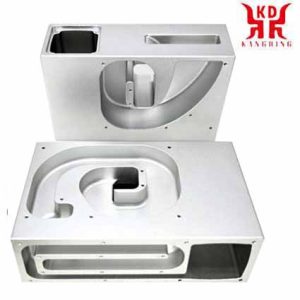
CNC Cutting speed
Cutting speed
Main article: Cutting speed
Define this as cutting speed at the linear speed of the periphery of the cutter or other tool that uses milling. The cutting speed, which is expressed in meter per minute (ಮೀ / ನಿಮಿಷ), has to be chosen before starting the machining and its value depends on many factors, especially the quality and type of cutter that is used. ಬಳಸಿ, the hardness and machinability of the material to be machined and the best speed used. The main limitations of the machine are the range of speeds, the power of the motors and the rigidity of the fixation of the piece and the tool.
As each cutting edge of the milling cutter works intermittently on the part, cutting only one fraction of each revolution of the tool, the cutting edges have temperatures lower than those that they will never reach and, regardless of this, use speeds. cutting older. If yes, the work of the milling cutter can never be considered intermittent, since there is always a cutting edge in the working phase.
From the determination of the cutting speed, the revolutions per minute that the tool spindle will have can be determined according to the following formula:
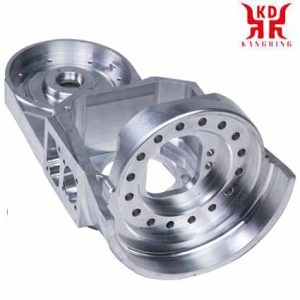
Set Tool rotation speed
Where Vc is the cutting speed, n is the speed of rotation of the tool, and Dc is the diameter of the tool.
Cutting speed is the main factor that determines the life of the tool. A high cutting speed allows machining to be carried out in less time but accelerates the wear of the tool. The manufacturers of tools and machining manuals provide valuable data on the fast cutting speed of the tools for a certain useful life or duration of the tool, by case of 15 ನಿಮಿಷಗಳು. On occasions, it is desirable to adjust the cutting speed for a different duration of the tool and to optimize the productivity, for which, the values of the cutting speed multiply by a correction factor. The relationship between this correction factor and the duration of the tool n’operation of nun and llinial cutting.
Excessive cutting speed can lead to very rapid wear of the tool cutting edge, plastic deformation of the cutting edge with loss of machining tolerance and, generally speaking, poor machining quality. ಮತ್ತೊಂದೆಡೆ, a cutting speed that is too low can lead to the formation of a contribution to the tool, difficulties in the evacuation and an increase in machining time, which translates into a low productivity and a high cost of machining.
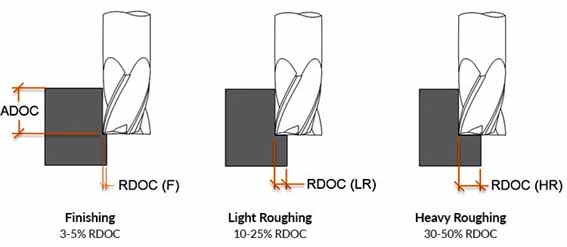
Set CNC Depth of cut or run
Tool rotation speed
The speed of rotation of the spindle is expressed davezu in revolutions per minute (rpm). In conventional milling machines there is a limited range of speeds, depending on the operating speed of the main motor and the number of speeds in the gearbox of the machine. On numerical control milling machines, this speed is controlled with a feedback system that can choose any speed within a range of speeds, up to a maximum speed.
The speed of rotation of the tool is directly proportional to the cutting speed and inversely proportional to the diameter of the tool.
The best speed of milling is the relative speed between the piece and the tool, this is the tail speed that the cut progresses. The better and the radius of the cutting tool tip are the two most important factors on which the roughness of the milling surface depends.
Each cutter can effectively cut a range of speeds of best per revolution of the tool, called its best per revolution (fn). This range depends fundamentally on the number of teeth of the cutter, the size of each tooth and the depth of cut, in addition to the type of material of the piece and the quality and type of cutting plate. This range of speeds is experimentally determined and attached to our insert manufacturers’ catalogs. ಜೊತೆಗೆ, this speed is limited by the rigidity of the part and tool attachments and by the power of the engine of the machine. The maximum thickness of in mm is the most important limitation indicator for a milling tool. The cutting edge of the tools is tested for having a certain value of a minimum and a maximum of coarseness.
The improvement per revolution (fn) is the product of the improvement per tooth per number of teeth (z) of the tool.
The speed of improvement is the product of the improvement per revolution of the speed of rotation of the tool.
Like the tool’s rotation speed queue, in conventional milling machines the best speed chooses a range of speeds available in a box of changes, being that the numerical control milling cutters can work with any speed from best to maximum. maximum speed of the machine.
The speed of improvement is decisive for the formation, the power consumption, the surface roughness, mechanical stresses, the temperature in the cutting area and the productivity. A high speed of improvement gives rise to a good control and a longer duration of the tool per unit of machined surface, but also gives rise to a high surface roughness and a greater risk of deterioration of the tool by frayatos or by excessive temperatures. If yes, a slower speed leads to the formation of longer forgaxes that can form loops and a higher machining time, which means that the duration of the tool per surface unit is shorter and that the production is more expensive.
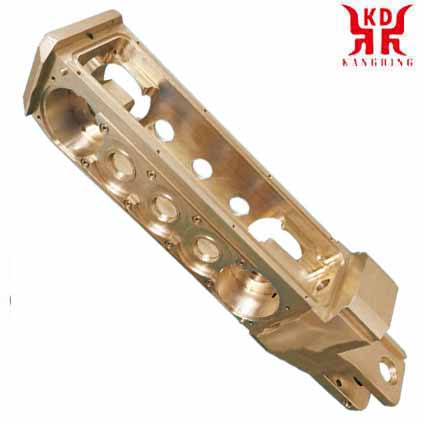
Fast machining
Depth of cut or run
The depth of cut or depth of pass (p) and the depth of the layer cornered from the surface of the piece in a single pass of the tool. Davezu expressed in millimeters (ಮಿಮೀ). The cutting width (ರು), expressed in mm, and the width of the part of the piece involved in the cut. These parameters have to be taken into account due to the influence that the calculation of the forging section has and consequently the necessary cutting force to be able to carry out the machining.
The depth of the pass is established a priori and depends mainly on the growth of the material to be machined, the degree of dimensional precision to be achieved, the power of the machine and the relationship with respect to the best chosen and the parameters of the cutting plate. such as its size, the radius of the tip and its profile. When carrying out forge machining, use edges with a longer cutting edge that allow machining with higher pass depths and faster speeds. If yes, for the operations d’acabáu, get a depth of smaller cut.
The effective cutting length (la), which is the maximum value directly related to the length of the cutting edge, depends on the depth of the cut (p) and the position angle.
Thicket and section
The relationship between the best per tooth of the strawberry (fz) and the depth of the cut (p) constitutes the section of. The section is also related to the type of milling that is carried out, the section is equal to The thickness of the drill corresponds to the best per tooth of the bur.
Control of section and thickness are important factors in determining the machining process. The smaller the thickness of the starting moment, the filu load will be less and this will allow the application of higher speeds of improvement per tooth without damaging the mesmu, having to reduce the depth of cut on account of the smaller angles in the area of the edges. The power to control the section depends mainly on factors such as the power of the machine, the fixation or the clamping system of the piece, the section of the tool sleeve as well as the clamping of the inserts and the xeometry of the tool. them mesmes. The increase in the section and thickness, among other variables, ವಸ್ತು ತೆಗೆದುಹಾಕುವಿಕೆಯನ್ನು ಕೈಗೊಳ್ಳಲು ಅಗತ್ಯವಾದ ಶಕ್ತಿಯ ಹೆಚ್ಚಳವನ್ನು ಸೂಚಿಸುತ್ತದೆ.
ಯಂತ್ರದ ಸಮಯ
ಮಿಲ್ಲಿಂಗ್ ಯಂತ್ರದ ಯಂತ್ರದ ಸಮಯವನ್ನು ಲೆಕ್ಕಾಚಾರ ಮಾಡಲು, ಯಂತ್ರದ ಭಾಗದಿಂದ ಮಿಲ್ಲಿಂಗ್ ಕಟ್ಟರ್ನ ವಿಧಾನ ಮತ್ತು ನಿರ್ಗಮನದ ಉದ್ದವನ್ನು ಗಣನೆಗೆ ತೆಗೆದುಕೊಳ್ಳುವುದು ಅವಶ್ಯಕ. ಶೈಲಿಯ ಉದ್ದವು ಮಿಲ್ಲಿಂಗ್ ಪ್ರಕಾರವನ್ನು ಅವಲಂಬಿಸಿರುತ್ತದೆ. ಅಂದಹಾಗೆ, ವಿಧಾನದ ಉದ್ದವು ಉಪಕರಣದ ಲೋಹದ ವ್ಯಾಸದೊಂದಿಗೆ ಹೊಂದಿಕೆಯಾಗುತ್ತದೆ; ಗ್ರೂವ್ ಮಿಲ್ಲಿಂಗ್ ವಿಭಿನ್ನವಾಗಿದೆ ಮತ್ತು ತೋಡಿನ ಆಳ ಮತ್ತು ಕಟ್ಟರ್ನ ವ್ಯಾಸವನ್ನು ಅವಲಂಬಿಸಿರುತ್ತದೆ; ಮತ್ತು ಆಂತರಿಕ ಅಥವಾ ಬಾಹ್ಯ ಬಾಹ್ಯರೇಖೆಯ ಮಿಲ್ಲಿಂಗ್ನಲ್ಲಿ ಯಂತ್ರದ ಉದ್ದಗಳು ಕಟ್ಟರ್ನ ವ್ಯಾಸ ಮತ್ತು ಬಾಹ್ಯರೇಖೆಯ ಮೇಲ್ಮೈಯ ಜಿಯೋಮೆಟ್ರಿಯನ್ನು ಅವಲಂಬಿಸಿರುತ್ತದೆ.
ನಿರ್ದಿಷ್ಟ ಕತ್ತರಿ ಬಲ
The cutting force is a parameter to take into account to avoid fray frayatos and deformations in the tool and in a piece and to be able to calculate the necessary power to carry out a machining determination. This parameter depends on the milling speed, the cutting speed, the machinability of the material, the hardness of the material, the characteristics of the tool and the average thickness of the forging. All these factors are included in a coefficient called the specific shear force (kc), which is expressed in N / mm².
Fast machining
The concept of rapid machining, also called high speed machining (MAV), refer to which are produced with modern machines, numerical control tools with powerful and robust heads that allow them to run at many thousands of revolutions per minute up to the order of 30,000 rpm, and very large work best when it comes to the machining of soft materials and with a lot of baleráu de forgaxa such that it is associated with the manufacture of molds or large components of the aeronautical industry. Highly machined metals and alloys are the most popular in the rapid machining concept. For fast machining of pieces with complex shapes, use CAM systems that generate specific trajectories of high speed, forging and finishing.
 English
English العربية
العربية 中文(漢字)
中文(漢字) Čeština
Čeština Dansk
Dansk Nederlands
Nederlands Suomi
Suomi Français
Français Deutsch
Deutsch Italiano
Italiano 日本語
日本語 ಕನ್ನಡ
ಕನ್ನಡ 한국어
한국어 Português
Português Русский
Русский Slovenčina
Slovenčina Español
Español Svenska
Svenska Türkçe
Türkçe

